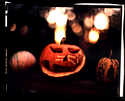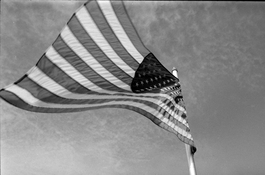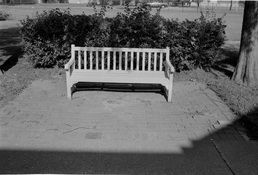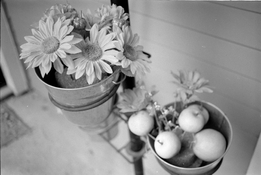I have gotten around to developing some actual pictures I took on the Catlabs Pro 320 with my Minolta SRT102 and a 35mm f/2.8 lens. To start, I wanted to do a crude ring-around with a somewhat typical, late afternoon, seven-stop scene, with some nice shadow, some mid-tone, and some highlight information. Super boring, but it could be informative, at least to me. I based my exposure and development on the results of my curve family and tone reproduction analyses. I set my Gossen Luna-Pro Digital F incident meter to ISO 64, then I made subsequent frames at ISO 40, ISO 100, ISO 160, and ISO 250. I processed the film in Kodak D76 1+1 for 5:45 min at 20C in a rotary processor.
Here's a picture of the negatives on a light table. I was pleased to find out that the results corroborated my earlier findings and the experiences of some of the other forum members who posted in this thread. In order to get ample shadow detail, ISO 64 is a good starting point, going as low as ISO 40, if necessary. From ISO 100 onward, you start losing quite a bit of shadow detail, which you cannot get back by increasing development time. Highlights are nicely contained by this film. The bench is painted bright white, is in full sunlight, and it, nevertheless, retains texture nicely. Whether highlight compression is a merit or a flaw is up to interpretation, but, it can be helpful at times. In the next few days, I will digitize some of the other pictures from this roll. By the way, in the ISO 100 frame, there's some glare from the light table. I noticed it too late to fix it.
View attachment 320608
















